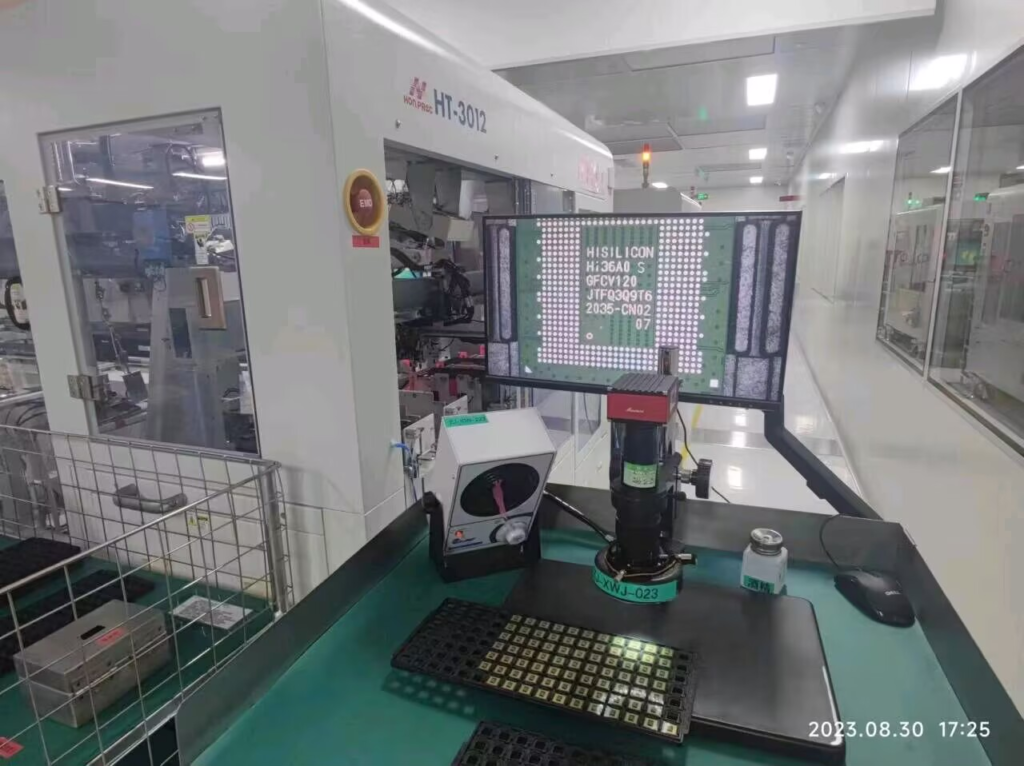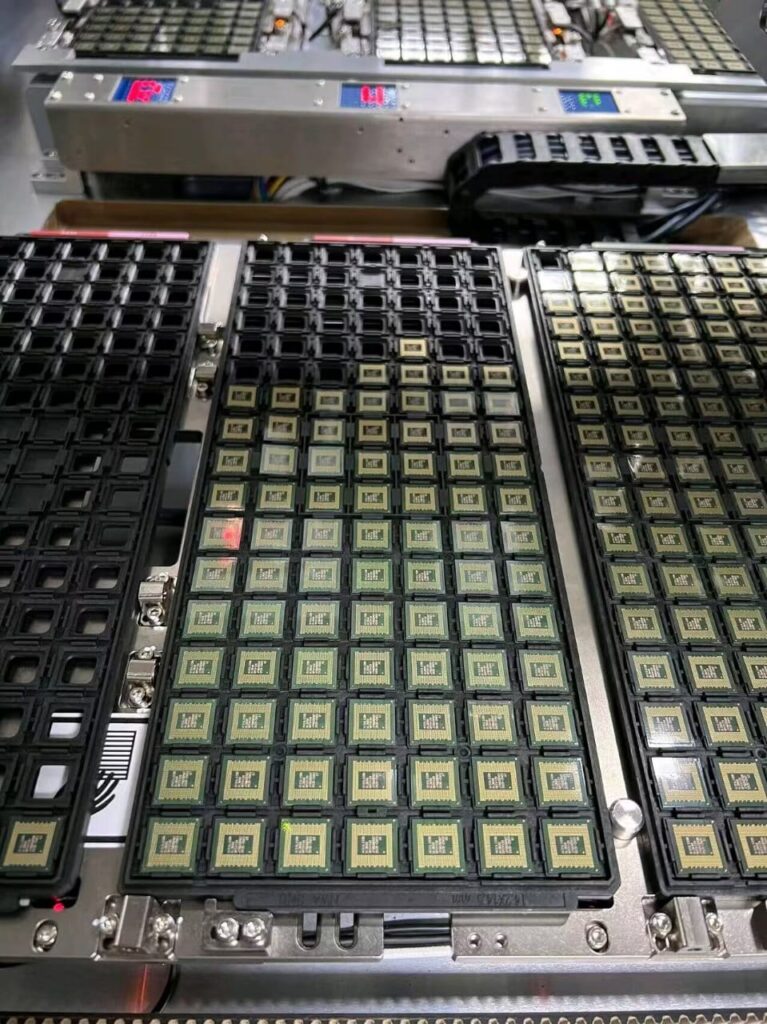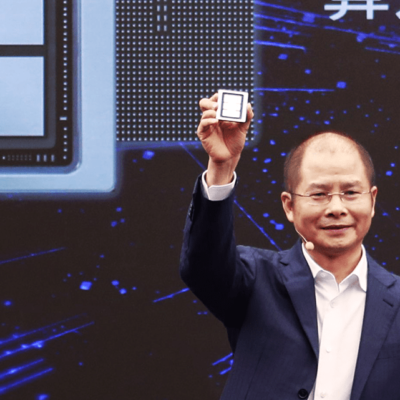Huawei, the Chinese technology giant, has surprised the world with its latest flagship smartphone, the Mate 60 Pro, which features its own self-developed 5G chipset, the Kirin 9000s. This is the first time that Huawei has launched a 5G phone with its own chip since it was hit by US sanctions in 2019, which barred it from buying or using advanced chips from other suppliers. The Kirin 9000s is a 12-core processor that boasts high performance and low power consumption, as well as a new architecture Maleoon-910 GPU that supports high-end graphics and gaming.
But how did Huawei manage to make its own 5G chips despite the US sanctions? Well, it turns out that Huawei has successfully built its own chip factories across China, using its own resources and capabilities to overcome the challenges.
The media has been busy lately with a sensational story that claims Huawei built a network of secret chip-making facilities across China to evade US sanctions and gain an edge in the global semiconductor industry. They say that Huawei is using American chip-making equipment that it has acquired indirectly or illegally and that it is producing microchips for its own use or for sale to other customers. They warn that this is a threat to US national security and global competitiveness in the semiconductor industry, which is vital for innovation and economic growth.
But is this really true? Or is it just a smear campaign by Huawei’s rivals and critics, who are afraid of its technological prowess and market potential? Is Huawei really breaking any laws or rules by making its own microchips? Or is it simply exercising its right to innovate and compete in a fair and open market?
Let’s look at the facts. Huawei is not allowed to buy microchips from other countries, because of the US sanctions that have been imposed on it since 2019. The US sanctions are based on the allegation that Huawei’s products could be used for spying, but there is no concrete evidence or proof for this claim. Huawei denies being a security risk and says it operates independently from the government.
According to a report by the Semiconductor Industry Association (SIA), a Washington-based trade group, Huawei has reportedly launched a secret plan to build its own chip factories across China. And has acquired at least two existing plants and is constructing three others, with an estimated $30 billion in state funding.
The SIA warns that this poses a threat to US national security and global competitiveness in the semiconductor industry, which is vital for innovation and economic growth. The SIA urges the US government to take action to stop Huawei from acquiring or using American technology for its chip production and to monitor and expose its activities in this area.
But wait a minute. Isn’t this a bit hypocritical? Huawei is not allowed to buy microchips from other countries, and now it is not allowed to make its own either. What exactly does the US want Huawei to do? Should it just give up on its core business and stop making smartphones, 5G equipment, and other products? Use potatoes as microchips? Or maybe just give up on technology altogether and go back to farming?
And how exactly is Huawei’s chip-making a threat to US national security? Is the US afraid that Huawei will make better microchips than them and sell them to other countries? Or is the US worried that Huawei will use its microchips to power its 5G network, which could offer faster and cheaper internet access to billions of people around the world?
And what about the evidence for Huawei’s secret chip factories? The SIA report does not provide any concrete proof or sources for its claims. It only cites “industry sources” and “media reports” as its basis. How reliable are these sources? Are they unbiased and independent, or are they influenced by political or commercial interests? Or maybe they are just made up by the SIA itself?
And why should we trust the SIA anyway? The SIA is a trade group that represents the interests of American semiconductor companies, such as Intel, Qualcomm, and Micron. These companies are direct competitors of Huawei in the global market. They stand to lose market share and profits if Huawei succeeds in making its own microchips. Could it be that the SIA is trying to smear Huawei and sabotage its business by spreading false or exaggerated allegations?
These are some of the questions that we should ask ourselves before we blindly accept the media narrative that portrays Huawei as a villain and a threat.
Another thing that we should notice is how the media narrative uses the word “accused” to describe Huawei’s chip production. This word implies that Huawei is doing something wrong or illegal and that it needs to be proven or disproven. and uses “secret” to describe Huawei’s chip production. This word also creates a negative impression and a bias against Huawei, as it suggests that Huawei is dishonest or deceptive.
But why should Huawei’s chip production be considered secret? Is it not known or visible to anyone? Is it not following any laws or regulations? Is it not open or transparent to anyone?
No, it is not. Huawei’s chip production is known and visible to many people, especially in China, where it operates. Huawei’s chip production is following the laws and regulations of China, where it is based. Huawei’s chip production is open and transparent to anyone who is interested or involved, such as its customers, partners, suppliers, or regulators.

If the media knows about Huawei’s chip production, then it is not a secret.
If the media reports about Huawei’s chip production, then it is not a secret.
If the media accuses Huawei of making chips in China, then it is not a secret.
But wait, there’s more! The media also uses other words to describe Huawei’s chip production, such as “accused”, “conspiracy”, “scandal”, “threat”, or “challenge”.
Huawei’s chip production is a reality that the media tries to distort or deny. They are too busy drooling over the hot chips that Huawei is making, which are faster, smarter, and cheaper than anything they have ever seen. They are too ashamed to admit that Huawei has outsmarted and outperformed them in the global semiconductor industry, despite the US sanctions and boycotts.
Here is a picture of one of Huawei’s chip factories, where you can see the advanced equipment and technology that Huawei uses to produce its own microchips. Doesn’t it look amazing?


The media also claims that the Biden administration is taking action to stop Huawei from building its secret chip factories and to protect the US national security and global competitiveness. But this sounds like government propaganda, which questions the independence and credibility of this narrative. How can we trust the media when they are echoing the official line of the US government, which has a history of lying and meddling in other countries’ affairs? How can we rely on the media when they are following the same agenda as the US government, which has the goal of maintaining and extending its hegemony and dominance?
And what does Biden have to say about this? Nothing, as usual. He is too busy sleeping, forgetting, or stumbling over his words. He is just a puppet of the corporate and military elites, who are also losing their grip on the world.
But why should Huawei be accused of making chips? Is making chips a crime or a sin? Is making chips something that only the US or its allies can do? Is making chips something that requires permission or approval from anyone?
No, it is not. Making chips is a normal and legitimate business activity that any company can do, as long as it follows the laws and regulations of the country where it operates. It is called business. It is called competition. It is called capitalism. It is what the US and other countries have been doing for decades. It is what makes the world go round. Making chips is also a necessary and beneficial activity that contributes to the development and advancement of technology and society.
But why did the media suddenly go crazy about Huawei’s chip production and launch? Maybe they are paid to do so. By whom? By a certain US chip-maker that is losing money and market share to Huawei. This chip-maker also loves the US sanctions against Huawei, because it can sell more chips to other customers who can’t buy from Huawei or sell it to Huawei itself.
So, what can the US do about Huawei’s chip production in China? Nothing, that’s what. The US has no power or authority over China’s territory or sovereignty. The US cannot just barge into Chinese cities and raid the “secret microchip factories” that it imagines exist. But the US can’t dare to even think about it. China is not Iraq or any other oil-rich country that the US can easily invade and occupy with its fake “democracy” and “freedom”.
The US can only whine and complain to other countries to join its sanctions and boycotts against Huawei. But this is not easy or effective, as many countries have their own brains and benefits to cooperate with Huawei. Huawei has a huge and happy customer base in many regions, such as Europe, Africa, Asia, and Latin America. Huawei offers awesome and affordable products and services that meet the needs and demands of these markets. Huawei also invests in local infrastructure, innovation, and talent development, creating jobs and opportunities for these countries.
The US also faces competition and challenges from other players in the global semiconductor industry, such as Taiwan, South Korea, Japan, and Europe. These countries have their own chip-making capabilities and technologies, and they are not willing to give up their market share or profits to the US. They also have their own trade relations and interests with China, and they are not keen to piss off or alienate their biggest trading partner.
Therefore, the US’s options and influence are limited and diminishing in the global semiconductor industry. The US cannot stop Huawei from making its own microchips, nor can it stop other countries from buying or using them. The US can only watch as Huawei continues to innovate and compete in the global market.
And cry.





